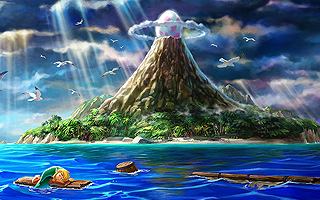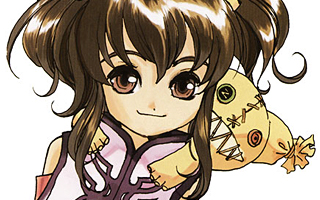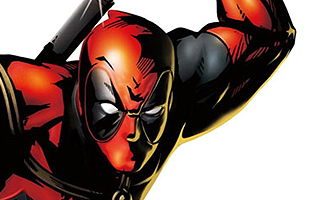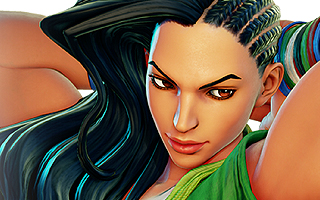Crossovers
Top 10 Best Video Game Crossovers of All Time!
Fictional crossovers allow characters from different franchises or realities to interact with one another. When done right, a crossover can bolster the popularity of an IP. By merging stories, settings, and universes together, creators also have the opportunity to merge fan bases together. Comic books rely heavily on crossovers to introduce new characters, and “cinematic universes” are all the rage in Hollywood these days. The video game industry adopted the crossover concept in the ’80s and hasn’t looked back. For the purpose of this list, I’m not simply ranking games in order of greatness. Rather, I’m looking at how well the crossover concept was executed. Ideally, the chosen narrative and art direction should be complimentary to all of the properties that are being combined. Most importantly, a crossover should satisfy the respective fans of each franchise.
Examples: The Avengers, Frankenstein Meets the Wolf Man, Archie Meets the Punisher
10
Konami Wai Wai World Series
1988

A simple side-scrolling platformer that was released exclusively in Japan, Konami Wai Wai World puts players in control of Konami Man and Konami Lady and tasks them with rescuing characters from various Konami games. These individuals all become playable after they are rescued, which was pretty remarkable for the time. (A roster of 10 characters was almost unheard of in 1988.) The likes of Simon Belmont, Goemon, and the ship from Gradius are featured, and a couple of licensed characters were included as well. Each stage is based off a different Konami game, and each character has their own unique abilities. A lot of games that didn’t make this list are admittedly better games than Konami Wai Wai World, but Konami’s quirky title deserves a mention for being one of the first examples of a video game crossover. It’s still stands as one of the strangest, too. Cross-promotion is almost expected in this day and age, but it’s still weird to see Simon Belmont fighting alongside King Kong and Mikey from The Goonies.
9
Fighter Megamix
1996

Fighters Megamix combines elements from Fighting Vipers and Virtua Fighter 2 and allows players to choose a fighting style to reflect either game. The roster includes every character from the aforementioned games and also features a handful of bonus characters from other Sega titles like Virtua Cop 2 and Virtua Fighter Kids. Obscure titles like Rent-A-Hero and Dynamite Dux are also represented, and the car from Daytona USA was even featured as a hidden fighter! Although Fighters Megamix revisited concepts from previous Sega games, it also looked to the future and acted as a introduction of sorts to Virtua Fighter 3. The Virtua Fighter 2 characters in the game all had new moves that would later appear in Virtua Fighter 3, and the game also allowed characters to sidestep attacks by using Virtua Fighter 3‘s new dodge technique. These new maneuvers helped keep the characters balanced and added even more depth. The numerous gameplay concepts in Fighters Megamix don’t always mesh well with one another, but its overflowing with outlandish humor and is just begging for a sequel.
8
Project X Zone Series
2012

Project X Zone and its sequel are tactical role-playing games and the successors to Namco x Capcom. The simplistic gameplay is nothing to write home about, but the depth of its rosters are beyond compare. Project X Zone was conceived by Namco Bandai as a “dream crossover” project that would include various Namco characters as well as characters from Capcom and Sega franchises. The sequel took things even further with the inclusion of Nintendo characters. Over 90 characters were included in the first game while the second featured even more. Characters from Street Fighter, Resident Evil, Devil May Cry, Ace Attorney, Tekken, SoulCalibur, Virtua Fighter, Streets of Rage, Shenmue, Fire Emblem, Xenoblade and dozens of other franchises make appearances, and the series does an excellent job of keeping you guessing who will show up next. The story doesn’t always make a lot of sense, but cascades of cameos make it a worthwhile experience for any hardcore gamer.
7
Sonic & Sega All-Stars Racing Series
2010

I’ve already recognized a Sega crossover on this list, but I’d be remiss not to mention Sonic & Sega All-Stars Racing too. It’s a racing game in the vein of Mario Kart, but the levels are more varied since more vehicle types are included. Cars, bikes, and hovercrafts were featured in the first game, while the sequel featured transforming vehicles that could take to the skies or the seas. The games obviously feature classic Sega characters, but what makes them truly special is that many of these characters had been neglected for years. I’ll never get tired of seeing Alex Kidd; Ulala is a welcome addition to any game; and it’s nice to know that Panzer Dragoon and Skies of Arcadia weren’t completely forgotten. The developers could have simply thrown the characters into karts and called it a day, so I’m surprised by how well the game captures the essence of each character. AiAi runs around in an oversized monkey ball, Billy Hatcher balances himself on a giant runaway egg, and Ryo Hazuki drives his forklift while jockeying for position. The games are filled to the brim with fan service, and they’re a reminder of why Sega so popular in the first place.
6
Heroes of the Storm
2015

Blizzard Entertainment is behind some of gaming’s biggest franchises, but they release games very sparingly. (Discounting expansion packs, they have less than 20 games in their 25+ years of existence.) With titles like Warcraft and StarCraft to their name, they are largely responsible for the popularity of the real-time strategy genre. The entire MOBA (multiplayer online battle arena) genre used the aforementioned games as a foundation, but Blizzard spent the better part of the decade on the sidelines while companies like Riot Games and Valve raked in the cash with League of Legends and DOTA 2. Heroes of the Storm was Blizzard’s first MOBA game and aimed to streamline the sub-genre they helped create. The same user-friendly approach that made World of Warcraft the most successful MMORPG ever created makes Heroes of the Storm one of the most accessible MOBA games. Throwing legendary characters from Warcraft, Diablo, StarCraft, and Overwatch together is basically a license to print money, and it’s fun to see them use their abilities in a new venue. I couldn’t be happier to see the Lost Vikings back in action and can’t wait to see a representative from Rock ‘n Roll Racing in the future.
5
Hyrule Warriors
2014

Although Hyrule Warriors uses settings and characters from the Zelda series, the hack-and-slash gameplay is taken directly from Koei’s Dynasty Warriors franchise. Hyrule Warriors puts a much greater emphasis on combat than other Zelda games and features large-scale battles with hundreds of enemies. It’s a Dynasty Warriors game through-and-through, but it feels like a love letter to Zelda fans. The game is removed from the proper Zelda timeline, so the developers had creative freedom to feature an assortment of past Zelda characters regardless of whether it made canonical sense for them to appear in the same world. Iconic weapons and items from previous Zelda games are used in creative new ways, and the boss battles are incredible. All told, Hyrule Warriors is an effective marriage of the Zelda and Dynasty Warriors franchises that also serves as a crossover of past Zelda games.
4
The King of Fighters Series
1994

More so than any other game on this list, The King of Fighters overshadowed the franchises that it was based on. The game featured characters from Fatal Fury and Art of Fighting, but it eclipsed them both in terms of popularity and critical reception. The game even revived characters from long-forgotten SNK titles like Ikari Warriors and Psycho Soldier. Other SNK games faded into obscurity as the years passed, but The King of Fighters series still has relevance in the fighting game community decades after its debut. It basically acted as a replacement for the games that inspired it. The only reason why it’s not ranked even higher on this list is because it developed too much of its own identity and almost doesn’t even feel like a crossover title anymore. Countless characters have been created specifically for The King of Fighters, so the “dream match” concept that defined earlier entries in the series isn’t nearly as apparent as it once was.
3
Kingdom Hearts Series
2002

Kingdom Hearts combines characters and settings from classic Disney animated features with those from Square’s Final Fantasy series. I’m a big Final Fantasy fan, but the most compelling aspect about Kingdom Hearts is how effectively it uses the Disney licenses. During the game, players will visit dozens of classic Disney-themed areas – including Wonderland, Captain Hook’s ship, and the 100 Acre Wood. Timeless Disney characters are lurking around every corner, and the game feels almost magical at certain points. The central protagonist is an unassuming 14-year old boy named Sora, but Donald Duck and Goofy fight along side him as computer-controlled characters. Tarzan, Aladdin, Ariel, Jack Skellington, Peter Pan, and the Beast will also join Sora’s party on a temporary basis. (Tinkerbell, Simba, and the Genie can be summoned to battle as well.) Dissidia provides a more concentrated dose of Final Fantasy-branded nostalgia, but the Disney-centric Kingdom Hearts reminds me of my childhood.
2
Capcom’s Vs. Series
1996

Each game in Capcom’s Vs. series has its own identity, but I’m including them as a single entry on this list since they’re all cut from the same cloth. X-Men vs. Street Fighter was Capcom’s first foray into the world of crossover fighting games, and they have basically been using the same formula ever since. Marvel Super Heroes vs. Street Fighter expanded the comic book side of the roster while Marvel vs. Capcom and its sequels provided a larger pool of video game characters to draw from. Dozens of characters were featured on each side, but they all felt like they belonged to the same universe. In a sense, the games highlighted the similarities between comics and video games. This is part of the reason why they helped increase the popularity of Marvel comics in Japan. In addition to their work with Marvel, Capcom has released other noteworthy crossover fighting games. Capcom vs. SNK was a coming together of the two most prolific fighting game companies of the ’90s, while Tatsunoko vs. Capcom showcased popular Japanese characters that were largely unknown to western audiences. Fans of frenetic action and classic 2D fighting games can’t go wrong with any Capcom crossover.
1
Super Smash Bros. Series
1999

Super Smash Bros. is a game that broke convention at every turn. Equal parts fighting game and party game, it appeals to casual gamers and core audiences alike and has become one of Nintendo’s most important franchises. The first game in the series (released for the Nintendo 64 in 1999) was a relatively small project from HAL Laboratory that began development before Nintendo had even approved the idea. The game’s roster featured characters from Mario, Zelda, Metroid, and Pokémon among others. (The stages and background music were also lifted from existing Nintendo franchises.) Each new game in the Smash series has been met with more enthusiasm, and other games have even been given a popularity boosts for being associated with it. The inclusion of Marth and Roy in Super Smash Bros. Melee introduced western gamers to Fire Emblem, while Pit’s appearance in Brawl helped relaunch the Kid Icarus franchise. The game started as a crossover of Nintendo all-stars, but the inclusion of third-party characters like Solid Snake, Sonic the Hedgehog, Mega Man, Pac-Man, Ryu, Cloud Strife, and the incomparable Bayonetta make the series feel like a “who’s who” of the video game world.





Do you agree with this list? Let us know what you think by leaving a comment below. Your opinion matters!